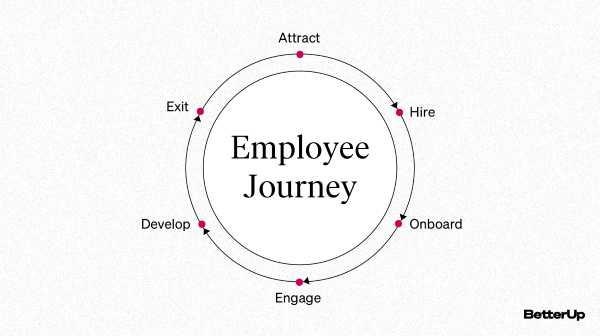Working Strategies To Improve Employees Experience

Employee experience refers to the sum of all interactions and experiences an employee has with their workplace. This concept includes various aspects such as interactions with colleagues, managers, and HR from a cultural perspective, as well as practical aspects like office technology and workspace settings.
Essentially, employee experience (EX) encompasses all the touchpoints between employees and the organization, similar to how customer experience (CX) covers interactions between customers and a business.
Key Factors Influencing Employee Experience
Employee experience is a multifaceted concept influenced by several critical factors:
1. Management Relationships
The nature of interactions between employees and management significantly impacts the overall work experience. According to a Gallup survey conducted in 2024, managers account for 70% of the variance in employee engagement. This underscores the importance of effective leadership. Great managers inspire and motivate their teams, fostering a work environment where employees are passionate and dedicated to their roles.
2. Employee Life Cycle
The employee life cycle (ELC) represents the progression and milestones an employee experiences throughout their tenure with a company. This journey can be likened to the customer journey used in crafting customer experiences. Organizations often track this journey to enhance the overall employee experience, focusing on critical phases from recruitment to career development.

3. Technology Interactions
Digital interactions—encompassing software, hardware, systems, and applications—form a significant part of the digital employee experience (DEX). Having access to effective digital tools can enhance productivity and engagement. It’s essential for organizations to ensure that employees have the right technology to perform their jobs efficiently.
4. Team Dynamics
The dynamics within a team can greatly influence daily work life. Positive team dynamics foster psychological safety and trust, leading to increased productivity, creativity, and collaboration. Tools like the Atlassian Team Playbook can help assess and improve team health, thereby enhancing the overall employee experience.
5. Organizational Encounters
Interactions with various parts of the organization, such as HR communications and CEO town halls, also impact employee engagement. Effective two-way communication helps employees feel valued and heard, which in turn boosts engagement and satisfaction.
4 Ways to measure Employee Experience
To effectively manage and improve employee experience, organizations need to measure it accurately. Here are some methods to establish a baseline and track EX initiatives:
1. Periodic Employee Surveys:
Regular questionnaires can provide insights into employee satisfaction and areas for improvement.
2. One-on-One Interviews:
Individual interviews offer a more in-depth understanding of personal experiences and concerns.
3. Pulse Surveys:
These quick, frequent surveys help gauge ongoing sentiment and identify emerging issues.
4. Key Performance Indicators (KPIs):
Metrics such as absenteeism and employee retention rates can signal the effectiveness of EX strategies.

How to identify Subpar Employee Experience
Recognizing whether your employee experience is lacking involves both quantitative and qualitative assessments. If you're unsure whether adjustments are needed, look out for the following signs:
1. Employee Complaints:
A rising number of complaints can indicate underlying issues with the employee experience.
2. Low Engagement:
Engagement levels reflect employees’ enthusiasm, commitment, and willingness to contribute beyond their basic duties. Poor engagement often signals a need for improvement in how employees are valued and supported.
3. High Turnover Rates:
Frequent departures, whether voluntary or involuntary, can point to dissatisfaction or issues within the workplace.
4. Increased Absenteeism:
Higher rates of unapproved absences often indicate disengagement or dissatisfaction.
5. Lack of Feedback:
Ignoring employee feedback and suggestions can be a significant indicator of poor employee experience.
7 Strategies to Enhance Employee Experience
If you identify areas needing improvement, consider implementing these strategies to enhance the employee experience:
1. Recognition and Appreciation
Employees want to feel valued. Implementing recognition programs or awards can boost morale and make employees proud of their contributions. Public acknowledgment of achievements helps reinforce positive behaviors and builds a sense of accomplishment.
2. Creating a Supportive Environment
A safe and supportive work environment is crucial. Ensure that employees have the necessary tools, training, and procedures to perform their jobs effectively. For remote workers, emphasize the importance of a suitable workspace and ergonomic conditions.
3. Empowering Employees
Allowing employees to make decisions and solve problems independently can significantly enhance their sense of autonomy. Empowering frontline staff to contribute to process improvements fosters engagement and satisfaction.
4. Promoting Growth and Development
Investing in employees' personal and professional growth shows that the organization values their development. Implementing learning and development programs that offer new skills and career advancement opportunities can increase job satisfaction and loyalty.
5. Offering Flexibility
Meeting employees' needs for work-life balance is essential. Providing flexible work arrangements, such as adjustable work hours or remote work options, helps employees manage their personal and professional responsibilities more effectively.

6. Enhancing Communication
Effective communication is key to retaining employees. Ensure that there are clear channels for communication across all levels of the organization. Regular updates and open dialogues help prevent misunderstandings and build trust.
7. Competitive Compensation
Ultimately, employees work for compensation. Ensuring that your wages and benefits are competitive is crucial for retaining talent. Benchmark your compensation packages against industry standards to remain attractive to current and prospective employees.
By focusing on these aspects, organizations can significantly improve their employee experience, leading to higher engagement, satisfaction, and overall productivity.
Author Bio
Contributor comprises full-time and freelance writers that form an integral part of the Editorial team of Hubslides working on different stages of content writing and publishing with overall goals of enriching the readers' knowledge through research and publishing of quality content.
Article Comments
No Comments!
At present there are zero comments on this article.
Why not be the first to make a comment?
Similar Articles
Sponsor
Search Articles
Experts Column
Latest Articles
Featured Articles
Most Popular Articles












